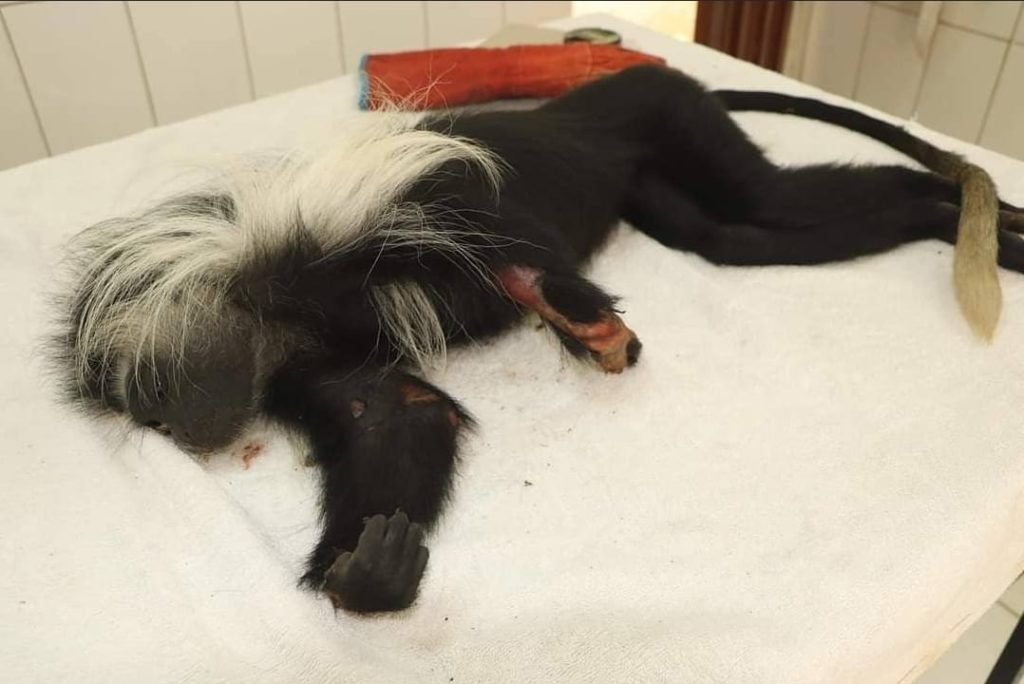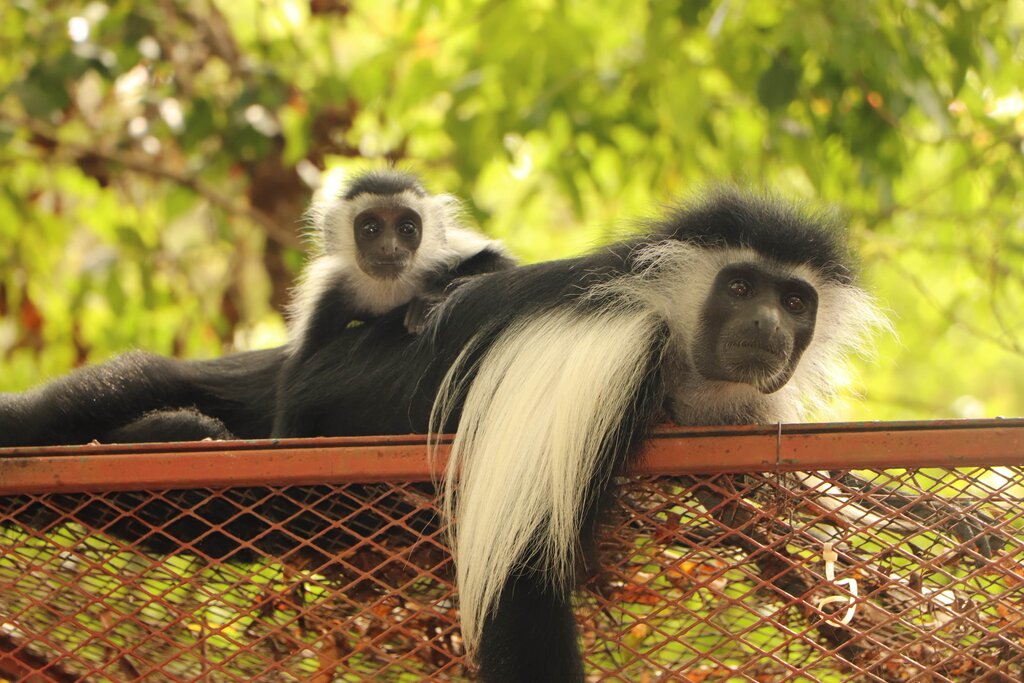As a result of urban development and the electrification of cities, the colobus monkey in Diani, Kenya – a species currently regarded as vulnerable – has been experiencing high rates of electrocution and deaths. Non-profit Colobus Conservation has made efforts to save the animal by insulating power lines.
—
Over the years Diani, Kenya has been experiencing a surge in human and urban development, which has led to fragmented habitats and wide-spread installations of electrical supplies, which in turn, have resulted in a surge of primate electrocutions in the region.
Colobus Conservation, an organisation dedicated to the conservation of the nationally threatened Angolan black and white colobus monkey and other primates on the south coast of Kenya, has been responding to welfare calls on electrocution and electrical shocks since 1997.
Primate electrocutions contribute to 16% of the organisation’s animal welfare call-outs and continue to be the leading cause of death among male Colobus monkeys. Colobus monkeys are adapted to using tree canopy with habitat fragmentation due to infrastructure development negatively affecting them. For instance, electrical power lines provide what seems to be perfect yet lethal aerial pathways for the monkeys to travel through the urbanised forest patches.
However, these pathways cause horrific injuries and deaths to primates. Most victims of electrical shocks and electrocution are colobus monkeys since they are the most arboreal of all the primate species in Diani. The survival rate of ‘electrocution’ victims is quite low hence why prevention is the best solution.

To save the now vulnerable colobus monkey from further population decline, Colobus Conservation has partnered with the Kenya Power and Lighting Company (KPLC) to insulate power lines along areas identified as electrocution hotspots. A total of 12 km of power lines have been insulated and some transformers have been relocated from identified primate electrocution hotspots. Although there has since been significant changes in the number of deaths caused by primate electrocutions, there are 12 km of uninsulated power lines remaining and continues to be a threat to the lives of the colobus monkey, especially during the dry season when the primates need to keep moving in search of food and water.
It is possible to save the population of colobus monkeys from potential extinction or extirpation from Diani through generous donations to support insulation costs. To insulate the remaining 12km, Colobus Conservation is hoping to raise $10,000, which will cover material and labour costs for the contracted personnel.
Discover more about Colobus Conservation’s work and how you can help and donate towards efforts to save colobus monkeys.
You might also like: How Wildlife Bridges are Saving Animals from Electrocution in Costa Rica


















